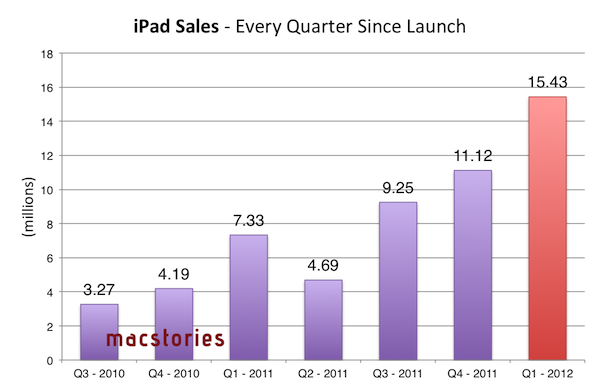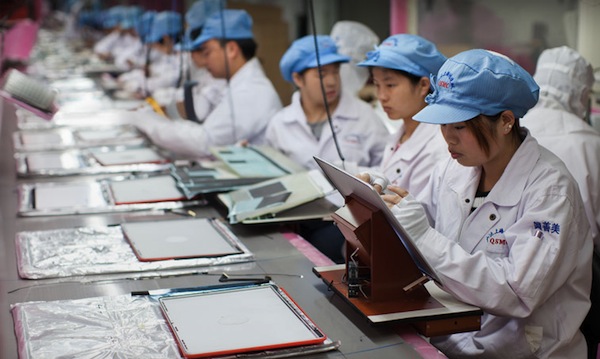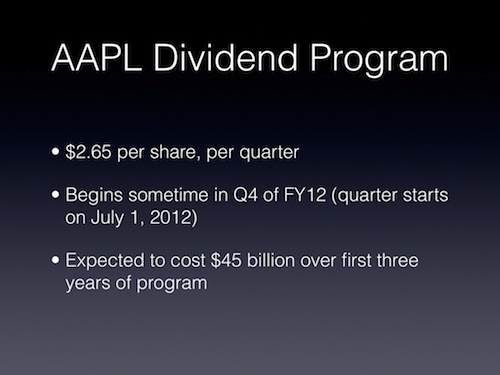Taking a noble cause one step forward, and then two steps back. That’s what I think Mike Daisey has done with his spinning of the truth and lying in creating his monologue ‘The Agony and Ecstasy of Steve Jobs’. I have no doubt that a significant part of Daisey’s intentions were noble in creating the show, particularly when he was starting — but all that was wasted, when, in the pursuit of a perfectly dramatic story, he started to make things up. His play was meant to be a serious, considered, sobering look at the ugly, hidden side of how our Apple devices are made. But because he made details, people and stories out of thin air – particularly the ones that plucked the hardest on our hearts – he has ultimately trivialised the real human suffering that does exist in the factories of a developing country. And the worst atrocity was Daisey hiding these stories and instead calling them as facts — because now that the truth has been revealed, the play (and the original This American Life podcast, where he adapted the show into an hour long episode) has been discredited severely.
Most of all, I feel anger and frustration towards Daisey. After initially deciding to tackle a serious humanitarian issue, he surrendered to greed, using dramatic licence to sensationalise the story. His greed has likely set action on the humanitarian issue backwards, not forwards as I think he did set out to do.
With this retraction so heavily publicised, many may be under the impression that there are no under-age workers, that there aren’t people poisoned by chemicals, or that there aren’t terrible living conditions in dorms at Foxconn. Daisey created stories and people that personified these facts, to advance his story in a dramatic way. But whilst those individual stories might not be true, those circumstances, those injuries, that mistreatment of workers is unfortunately still a fundamental truth that exists. Now that the story is all about Daisey’s lies, the ugly truth that Daisey had initially tried to shine a light on has been relegated to insignificance again.
Max Fisher over at The Atlantic epitomises my fears surrounding this pretty much perfectly in this paragraph (though his whole article is also worth a read):
How receptive will they be the next time a reporter writes about how Chinese laborers are forced to stand for so long they struggle to walk, or that some workers weren’t even given gloves to handle poisonous chemicals? Will they believe the reports that say Chinese manufacturers could fix a number of these problems simply by rotating shifts or allowing workers to organize to ask for gloves, neither of which would cost them (or American consumers) anything? Will they bother to listen to the human rights NGOs who say that American consumers can help fix the problem simply by choosing to buy products that are manufactured under better conditions? Or will they think back to Mike Daisey, and wonder who else might be lying to them?
The Truth of the Situation
So what is the truth of the situation? This is an important question given the retraction and media circus surrounding Daisey’s lies. The answer is one we should keep reminding ourselves of, because the truth of the matter is that, whilst Apple is ahead of its competitors in working conditions, safety and anti-discrimination, they are still well behind what is considered acceptable in developed countries. Here are some statistics, lifted directly off Apples own Supplier Responsibility Progress Report from earlier this year:
- 24 facilities conducted pregnancy tests, and 56 facilities did not have policies and procedures that prohibit discriminatory practices based on pregnancy.
- 93 facilities had records that indicated more than 50 percent of their workers exceeded weekly working hour limits of 60 in at least 1 week out of the 12 sample period.
- 67 facilities used deductions from wages as a disciplinary measure.
- A total of 6 active and 13 historical cases of underage labor were discovered at 5 facilities.
- 78 facilities had at least one instance where a workstation or a machine was missing the appropriate safety device such as a gear guard, pulley guard, or interlock.
- 99 facilities had noncompliance in some aspect of their fire prevention, preparedness, and response, such as unmarked fire extinguishers and insufficient fire drills.
I also highly recommend listening to Act 3 of This American Life’s Retraction episode, which further delves into what the truth of the situation really is.
Let’s be Realistic
China is still a developing nation and as is mentioned in Act 3 of This American Life, it would be unrealistic to expect equal standards of a Foxconn factory and one in the US. But we are still a long way off from that threshold of what is an unrealistic expectation of Foxconn and other Apple suppliers - and of Apple itself. They may be doing more than most companies, and we should congratulate them for that, but also stress it is not yet enough. There are still unacceptable breaches of supplier responsibility, as Apple has set out themselves in their reports. Apple, like it does in its products, should always strive upwards to improve its record on the issue.
We should also be putting pressure on other consumer brands to step up to the level of transparency that Apple offers with its supplier responsibility reports and encourage them to do better than Apple at improving standards. Finally, we should be educating each other on the issues, whether it be pointing out what is fact and what is fiction from Daisey’s monologue or discouraging pointless arguments for Apple to move its entire manufacturing base to the US (also see Act 3 of This American Life for a great explanation).
The revelation of Daisey’s lies should not be a cause for relief or celebration. It’s a sad revelation that a man had to further dramatise the sufferings of other human beings in order to get the rest of us to listen and feel sympathy. It’s time we pay attention to the facts ourselves, and make sure we don’t just ignore them.













